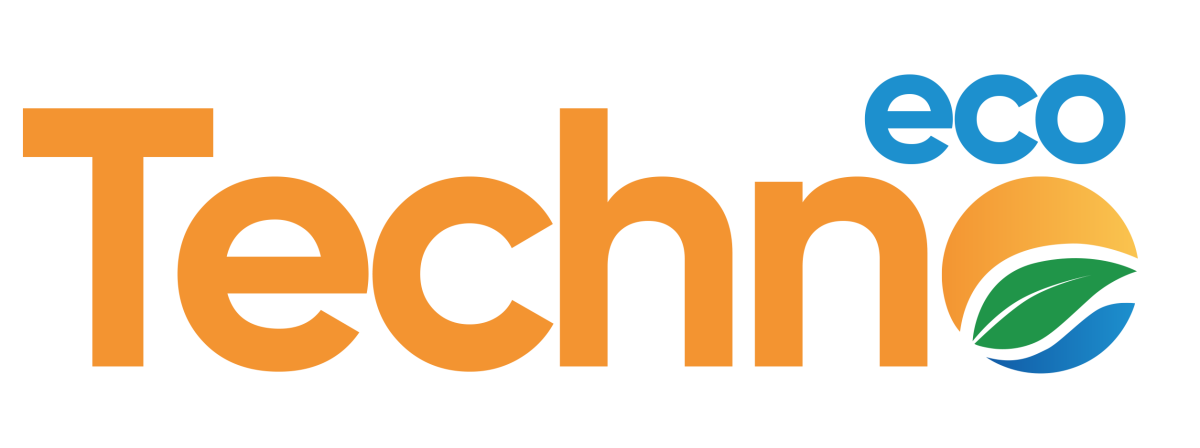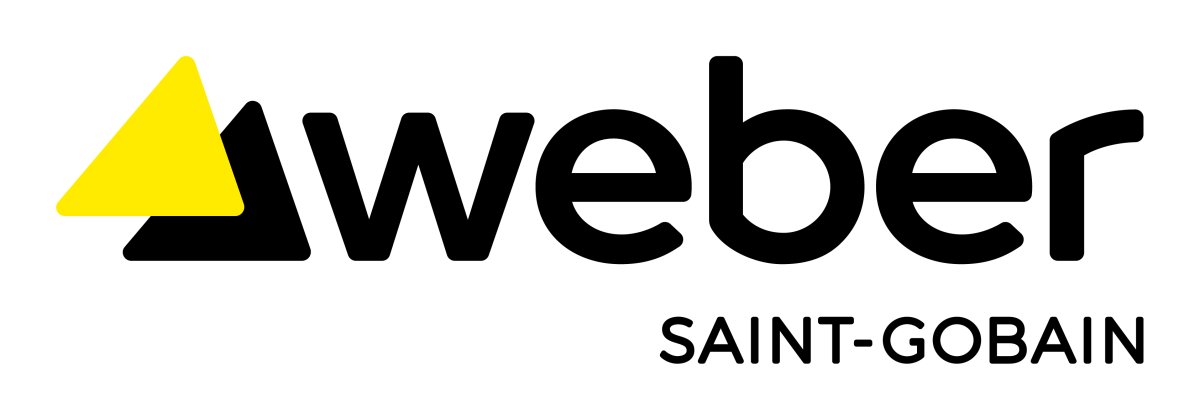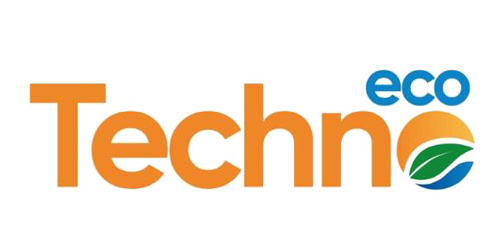الإيبوكسي
الإيبوكسي هو مادة بوليمرية حرارية (Thermosetting Polymer) ناتجة عن تفاعل كيميائي بين راتنج الإيبوكسي (Epoxy Resin) والمصلّب أو عامل المعالجة (Hardener)، غالبًا من فئة الأمينات. هذا التفاعل يُعرف بالبلمرة المتشابكة (Cross-linking Polymerization)، ويؤدي إلى تكوين مادة صلبة غير قابلة للانصهار تمتاز بالثبات الهيكلي والخصائص الفيزيائية المتميزة.
التركيب الكيميائي:
الإيبوكسي ينتمي إلى عائلة البوليبوكسيدات (Polyepoxides)، ويحتوي على مجموعة إيبوكسيد وظيفية (Epoxide Group –Oxirane)، وهي المسؤولة عن نشاطه الكيميائي. أشهر أنواع الراتنجات المستخدمة هي المشتقات من بيسفينول A (Bisphenol A) مع إبكلورهيدرين (Epichlorohydrin).
الخصائص التقنية:
- قوة ميكانيكية عالية: تشمل مقاومة الضغط، الشد، والانحناء.
- مقاومة كيميائية: يتحمل الأحماض والقلويات والمذيبات والزيوت.
- مقاومة للرطوبة والظروف البيئية: مثالي للتطبيقات الخارجية أو في البيئات القاسية.
- لاصق فعّال: يمتاز بقدرة التصاق ممتازة مع مجموعة واسعة من المواد.
- عازل كهربائي: يستخدم في التطبيقات الإلكترونية والعزل الصناعي.
- ثبات حجمي بعد المعالجة: لا يتقلّص ولا يتغير شكله بعد التصلب.
Epoxy
Epoxy is a thermosetting polymer formed through a chemical reaction between epoxy resin and a curing agent (hardener), typically derived from amines. This reaction, known as cross-linking polymerization, produces a rigid, durable material with excellent structural integrity and performance in demanding conditions.
Chemical Composition:
Epoxy belongs to the polyepoxide family and contains a reactive epoxide (oxirane) functional group, which enables it to cure when mixed with polyfunctional hardeners. The most commonly used resins are based on Bisphenol A and Epichlorohydrin, forming the backbone of most industrial epoxy sy
Key Technical Properties:
- High Mechanical Strength: Withstands tensile, compressive, and flexural stresses, ideal for structural and industrial uses.
- Excellent Chemical Resistance: Resists acids, alkalis, solvents, and oils—suitable for harsh environments.
- Moisture and Weather Resistance: Perfect for outdoor and waterproofing applications.
- Strong Adhesion: Bonds effectively to a wide range of substrates including metals, plastics, wood, ceramics, and concrete.stems. - Outstanding Electrical Insulation: Used in electronic encapsulation and protective coatings.
- Dimensional Stability: Maintains shape with minimal shrinkage after curing, ideal for precision applications.
Common Applications of Epoxy:
- Industrial and decorative flooring systems
- Structural adhesives
- Anti-corrosion coatings
- Electrical and electronic insulation
- Molds, tooling, and artistic casting
تصنيفات وأنواع الإيبوكسي، البولي يوريثان، والبول يوريا
Classifications and Types of Epoxy, Polyurethane, and Polyurea
---
1. حسب التركيب الكيميائي / By Chemical Composition
- الإيبوكسي (Epoxy):
- راتنج إيبوكسي نقي 100% صلب (Pure Epoxy, 100% Solids)
- راتنج إيبوكسي مع مذيبات (Solvent-Based Epoxy)
- راتنج إيبوكسي مائي (Water-Based Epoxy)
- البولي يوريثين (Polyurethane):
- بولي يوريثين أليفاتيكي (Aliphatic Polyurethane)
- بولي يوريثين عطري (Aromatic Polyurethane)
- بولي يوريثين مائي (Water-Based Polyurethane)
- بولي يوريثين مع مذيبات (Solvent-Based Polyurethane)
- البوليوريا (Polyurea):
- بوليوريا نقية (Pure Polyurea)
- بوليوريا معدلة (Modified Polyurea)
- بوليوريا هجينة (Hybrid Polyurea – blended with Polyurethane or Epoxy)
---
2. حسب نسبة الصلابة / By Solids Content
- 100% صلب (100% Solids)
- نسبة صلابة عالية (High Solids: 70–90%)
- نسبة صلابة منخفضة (Low Solids: <60%)
---
3. حسب نقاوة وشفافية المادة / By Purity and Transparency
- شفاف (Transparent / Crystal Clear)
- ملون (Pigmented / Colored)
---
4. حسب سرعة التصلب / By Curing Speed
- تصلب سريع (Fast Cure)
- تصلب عادي (Standard Cure)
- تصلب بطيء (Slow Cure)
---
5. حسب المرونة والصلابة / By Flexibility and Rigidity
- أنظمة صلبة (Rigid Systems)
- أنظمة مرنة (Flexible Systems)
- أنظمة شبه مرنة (Semi-Rigid Systems)
---
6. حسب مقاومة الظروف الكيميائية والبيئية / By Chemical and Environmental Resistance
- مقاومة عالية (High Resistance)
- مقاومة متوسطة (Medium Resistance)
- مقاومة منخفضة (Low Resistance)
في الوقت الذي أصبحت فيه أنظمة الطلاء الحديثة جزءًا أساسيًا من البنية التحتية الصناعية والمعمارية، لا تزال بعض الجهات تُمارس أعمال "الطلاء المتخصص" دون أدنى فهم علمي أو تقني لمبادئ هذه الأنظمة، معتمدين على خبرات بسيطة في الطلاء التقليدي، ظانّين أن ما يُطبق على جدار يمكن تطبيقه على أرضية مصنع أو سطح مكشوف أو مرفق حساس.
هذا خلل فادح قد يكلّف العميل خسائر جسيمة، سواء من حيث فشل النظام بعد فترة قصيرة أو من حيث التكلفة الباهظة لإصلاح الأضرار الناتجة.
الطلاء الصناعي المتقدم ليس مجرد لون يُطبّق على السطح، بل هو منظومة متكاملة تتطلب فهماً عميقاً لكيمياء المواد وسلوكها عند الخلط والتطبيق والتفاعل مع السطح والبيئة المحيطة.
المخاطر الحقيقية عند العمل مع غير المتخصصين:
- استخدام مواد غير متوافقة مع نوع الأرضية (كالأسطح الخرسانية الرطبة أو المعدنية غير المعالجة).
- تطبيق طبقات بسمك غير مدروس، مما يؤدي إلى تشققات أو انفصال الطلاء.
- عدم إدراك الفروقات بين المواد ذات الأساس المائي والمذيب (solvent/solvent-free).
- تطبيق البرايمر أو الطلاء فوق سطح غير مجهز أو غير نظيف، دون مراعاة زمن المعالجة بين الطبقات.
غياب المعرفة العلمية بتفاعل المواد، مثل كيفية مزج الإيبوكسي ثنائي المركب (resin & hardener) بنسب دقيقة حسب درجات الحرارة والرطوبة.
- استخدام مواد غير مقاومة للأشعة فوق البنفسجية في الأماكن المكشوفة، مما يؤدي إلى اصفرار وتشقق وتلف مبكر للطلاء.
- عدم معرفة البروتوكولات الزمنية لتطبيق طبقات الحماية بعد الطلاء الأساسي، مما يؤدي إلى فقدان الالتصاق أو الفعالية الحرارية والكيميائية.
---
✅ التخصص ليس رفاهية... بل شرط أساسي
لكل نوع من الطلاء استخدام محدد، ولكل بيئة خصائص يجب دراستها علميًا قبل التطبيق. لا يمكن أبدًا اعتماد "الخبرة الشخصية" كبديل عن المعرفة الفنية والاحترافية. من دون إشراف متخصص:
- لا يمكن تحديد نوع الراتنج أو نسبة الصلابة أو نوع البرايمر الأنسب.
- لا يمكن التنبؤ بنسبة التخفيف أو مدة المزج أو زمن العمل المفتوح (pot life).
- لا يمكن ضمان الأداء الميكانيكي أو الكيميائي للنظام بعد التطبيق.
---
As advanced coating systems become an integral part of modern construction and industrial infrastructure, we continue to see non-specialized contractors attempting to execute these complex applications based on simple painting experience—failing to realize that what works on a wall cannot be applied to a factory floor, rooftop, or high-performance facility.
This is a serious technical flaw that can lead to rapid system failure and significant financial losses in repair and downtime.
❗ Advanced industrial coatings are not “just paint” — they are engineered systems that require deep technical understanding of material chemistry, surface science, and environmental behavior.
Risks When Working Without Specialists:
- Incorrect material selection for surface type (e.g., moist concrete, unprimed metals).
- Improper film thickness, leading to cracking, delamination, or poor performance.
- Lack of understanding of solvent-based vs. water-based systems or solid content implications.
- Applying primers or topcoats without proper surface preparation or timing.
- Inaccurate mixing ratios of epoxy resin and hardener, especially under variable temperature/humidity.
- Use of non-UV-resistant systems in exposed areas, causing yellowing, degradation, or chalking.
- Failure to apply protective topcoats within the optimal time window, weakening adhesion and long-term protection.
---
Specialization Is Not a Luxury — It’s a Technical Requirement
Each coating system is designed for a specific substrate and usage condition. Scientific assessment must precede any application. Without expert supervision:
- You cannot determine the right resin or hardener grade.
- You cannot calculate the dilution ratio, open time, or curing profile.
- You cannot guarantee mechanical strength, chemical resistance, or longevity.
---في دراسة ميدانية دقيقة، قمنا بزيارة عدد من محلات مواد البناء التي تبيع منتجات الإيبوكسي، بهدف فحص مدى وعيهم بالجوانب الفنية والتقنية لهذه المواد. وكانت الصدمة أن معظم تلك الجهات تفتقر بشكل تام لأي معرفة علمية بأساسيات تركيب المواد، نسب المزج، ظروف التطبيق، أو حتى نوعية الاستخدام المناسب لكل منتج. الأكثر خطورة أن هذه المواد تُباع لمقاولين ومنفذين ليست لديهم أي خلفية متخصصة، بل يقومون بتجريب المواد كما لو أنها دهان عادي!
تبيّن لنا خلال هذه الجولة أن من يبيع الإيبوكسي، ومن ينفذه، لا يميّز بين راتنج منخفض الصلابة وآخر عالي التحمل، ولا يدرك تأثير نسب التخفيف، أو أهمية التوقيت الزمني بين طبقة البرايمر وطبقة التغطية، ولا حتى الفرق بين أنواع الطلاء التي تتحمل أشعة الشمس وتلك المخصصة للداخل فقط.
وهنا تكمن الكارثة: كل صاحب مهنة أصبح فجأة "خبير إيبوكسي"! تمامًا كما أن الحداد لا يُفترض أن يركّب التكييف، والنجّار لا يبني محطات كهرباء، فكذلك لا يحق لأي شخص أن يزاحم في مجال يتطلب دقة علمية ومعرفة تقنية، فقط طمعًا في ربح سريع على حساب جودة تنفيذ المشاريع.
ليست منافسة شريفة، بل فوضى فنية مدمّرة؛ ضحيتها الأولى هو العميل الذي يبحث عن "السعر الأرخص"، دون إدراك أن ما يوفّره اليوم قد يدفع ثمنه أضعافًا غدًا في الصيانة أو الإزالة أو حتى المخاطر الصحية. أما الضحية الكبرى فهي المنشآت نفسها التي تُنفّذ بعشوائية، دون دراسة هندسية أو إشراف متخصص، فتكون النتيجة بصمات فشل تتكرر: تقشّر، انفصال الطبقات، تآكل الأرضيات، وربما تسمّم هوائي من أبخرة المواد غير المتوافقة، أو حتى تلف هيكلي كارثي.
بحوث وإحصاءات داعمة:
- تشير دراسة صادرة عن American Coatings Association أن أكثر من 60% من فشل تطبيقات الطلاء الصناعي ناتجة عن سوء التحضير أو التطبيق الخاطئ، وليس بسبب المواد نفسها.
- ووفقًا لتقرير من NACE International (الجمعية الوطنية لمهندسي التآكل)، فإن الخسائر الاقتصادية الناتجة عن الطلاء غير الصحيح في المنشآت الصناعية تتجاوز 2.5 مليار دولار سنويًا على مستوى العالم.
- أما في تقارير سلامة البيئة، فقد وُثّقت حالات استخدام خاطئ لمواد إيبوكسي منخفضة الجودة أدت إلى ارتفاع تركيز المركبات العضوية المتطايرة (VOCs)، مسببة مشاكل تنفسية للعاملين والسكان.
In a thorough field study, we visited several building material stores selling epoxy products, aiming to evaluate their technical knowledge. What we discovered was alarming: the majority of these suppliers had zero understanding of the critical scientific and application-related aspects of epoxy systems. Even worse, they regularly sell these advanced materials to contractors who lack any specialized training—treating epoxy like ordinary paint.
It became clear that those selling and applying epoxy coatings cannot distinguish between flexible and high-strength formulations, nor do they grasp the significance of proper mixing ratios, environmental conditions, or the curing time between layers such as primer and topcoat. Most shockingly, there's no awareness of the difference between UV-resistant systems for exterior use and systems designed strictly for indoor environments.
This is where the real danger lies: everyone wants to be an epoxy “expert.” Just as a blacksmith should not install air conditioning systems, and a carpenter should not wire a building for electricity—non-specialists must not crowd into a field that demands scientific precision, technical expertise, and a clear understanding of material behavior. Profit without knowledge creates failure without warning.
"It is not a fair competition; it is a destructive technical chaos."
The first victim is the customer who is looking for a "cheaper price," unaware that what he saves today, he may pay back multiple times tomorrow — in maintenance, removal, or even potential health hazards.
But the greater victim is the construction itself — executed without engineering study or professional supervision.
The result is repeated patterns of failure: peeling, delamination, surface corrosion, and sometimes even toxic fumes from incompatible materials, or catastrophic structural damage.
Supporting Data:
- A study by the American Coatings Association found that over 60% of industrial coating failures are due to poor surface preparation or incorrect application, not the materials themselves.
- According to NACE International, improper coating practices cause over $2.5 billion in annual global losses in industrial structures.
- Environmental safety reports have recorded incidents where low-quality epoxy materials led to elevated VOC emissions, causing respiratory issues for workers and nearby residents.
منهجية "تكنوويكو" في تقديم حلول أرضيات احترافية مخصصة
في تكنوويكو، نمتلك خبرات تراكمية تمتد لأكثر من 30 عامًا في مجالات المواد التخصصية، تكنولوجيا الصناعات الكيميائية، والعضويات المتقدمة. هذه الخبرات تُترجم إلى قدرة فريدة على تقديم حلول متكاملة ومخصصة لأرضيات الإيبوكسي والأنظمة المتطورة الأخرى.
نحن لا نكتفي بتوريد المنتج، بل نبدأ من الجذر الفني الحقيقي للمشروع:
- فحص واختبار الأرضية الخرسانية مخبريًا، للتحقق من مطابقتها لمتطلبات الطلاء الصناعي.
- تحديد نوع المعالجة الخرسانية المثلى من خلال تقييم دقيق يعتمد على دراسات واقعية وتجارب تنفيذية عميقة.
- تصنيع منتجات مخصصة للمشروع ذاته عبر مصنعنا وفريقنا الفني المتخصص، لتلائم طبيعة الموقع وظروف الاستخدام بدقة فريدة.
نؤمن أن الأرضيات الصناعية ليست مجرد "أسطح مطلية"، بل هي منظومة فنية متكاملة تمزج بين الأداء العالي والشكل الإبداعي.
لذلك، نستخدم راتنجات إيبوكسي نقية ومتقدمة تقنيًا لتحقيق متانة فائقة، إلى جانب حلول زخرفية متقدمة مثل:
- كسر الرخام الملون بأنواعه وأحجامه
- الرمل الزخرفي الفني لتشكيل أرضيات ثلاثية الأبعاد
- أنظمة الفليكس و*الـ 3D Art Coatings*
- إضافة إلى أحدث تقنيات دهانات التأثير الصناعي الجمالي ذات البعد البصري الفريد
مع تكنوويكو، الأرضية ليست مجرد طبقة طلاء، بل إنجاز فني مدروس.
Techno eCo’ Approach to Professional Customized Flooring Solutions
At Techno eCo, we bring over 30 years of expertise in specialty materials, chemical industry technologies, and advanced organics. This enables us to deliver fully customized flooring systems, especially epoxy and other advanced resin-based coatings.
Our process beg- Laboratory testing of concrete surfaces to assess suitability.
- Customized surface treatment recommendations, based on in-depth evaluations.
- On-demand product formulation through our in-house factory and expert technical team.
We go beyond performance by integrating technical durability with artistic expression, offering:
- Colored marble chip flooring
- Artistic colored sand infusions
- Flex and 3D coating systems
- Latest industrial decorative coating technologies
With Techno eCo, your floor becomes a calculated artistic achievement. Ins with technical precision:













.png)